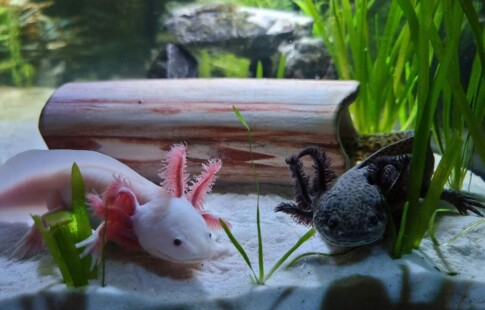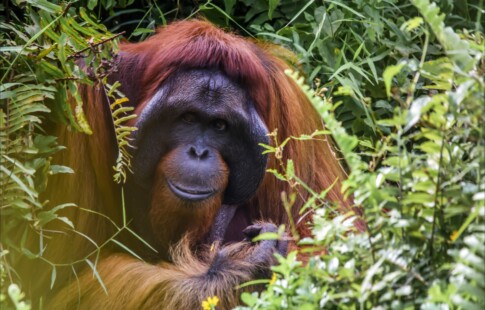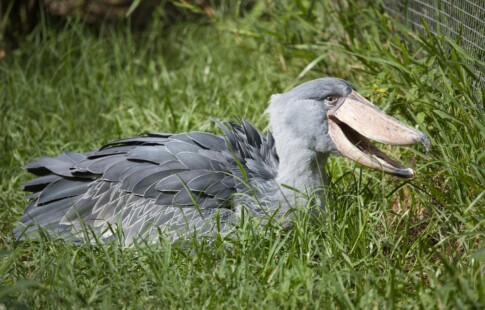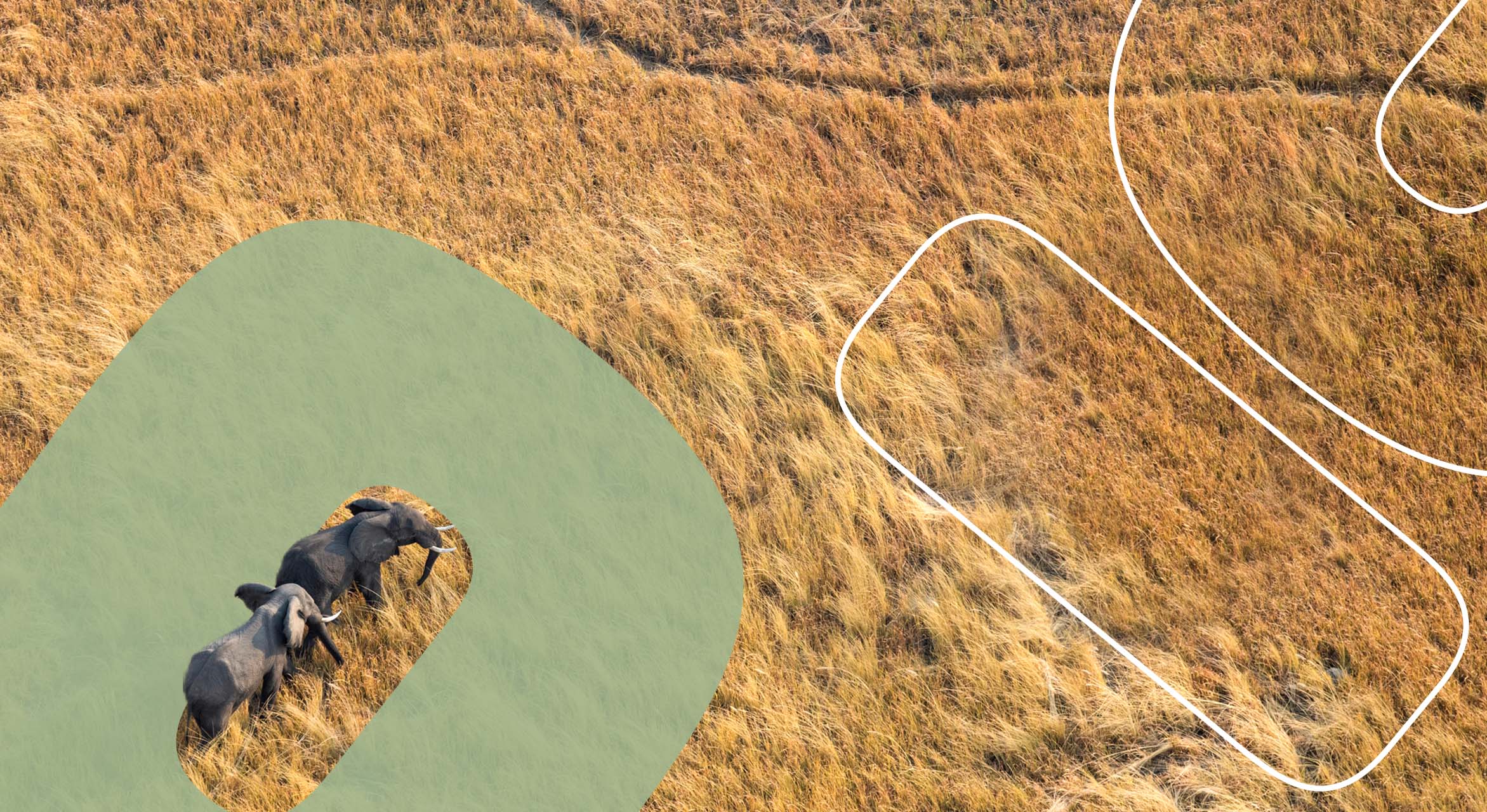
What are the Different Types of Habitats on Earth?
We are reader-supported. When you buy through links on our site, we may earn affiliate commission.
There are many different habitats on Earth, although only a handful are usually generalized for discussion. Regardless, by studying habitats, people can better understand the wildlife that comes from each natural environment and develop solutions for protecting the land and species that live there.
Examples of Habitats Across the Globe
The five primary biomes include forests, grasslands, mountain and polar regions, deserts, and aquatic ecosystems. Several of those habitats are home to an abundance of plant and animal life. Here is a breakdown of each of the five main biomes and their habitats across the globe.
1. Forests
According to the World Wildlife Fund (WWF), forests cover approximately 31% of land area and are a source of livelihood and employment for over 13.2 million people. These expansive ecosystems also support about three-quarters of life on Earth.
The three types of forest habitats include:
- Temperate: These forests are multi-latitudinal and located anywhere between the tropics and polar regions. Home to giant maple and oak trees, they can also adapt and survive through four seasons: winter, spring, summer, and fall.
- Tropical: Also known as tropical rainforests, these hot, humid biomes are located close to the equator and are known for their dense, three-layered canopies of ferns, orchids, and draping vines.
- Boreal: Also called taiga, boreal forests cover 5.8 million square miles and are found in cold climates such as Russia, Scandinavia, China, Mongolia, Japan, and North America. These ecosystems usually see a lot of snowfall and are known for their evergreen, spruce and pine trees.
Forests are teeming with life, and certain animal and plant species thrive in each type of ecosystem. For example, you are likely to see moose, wolves, and deer in boreal forests. In tropical rainforests, it’s common to see toucans, jaguars, and various insects. You can also expect to see fox, black bear, and bald eagles in more temperate forests.
2. Grasslands
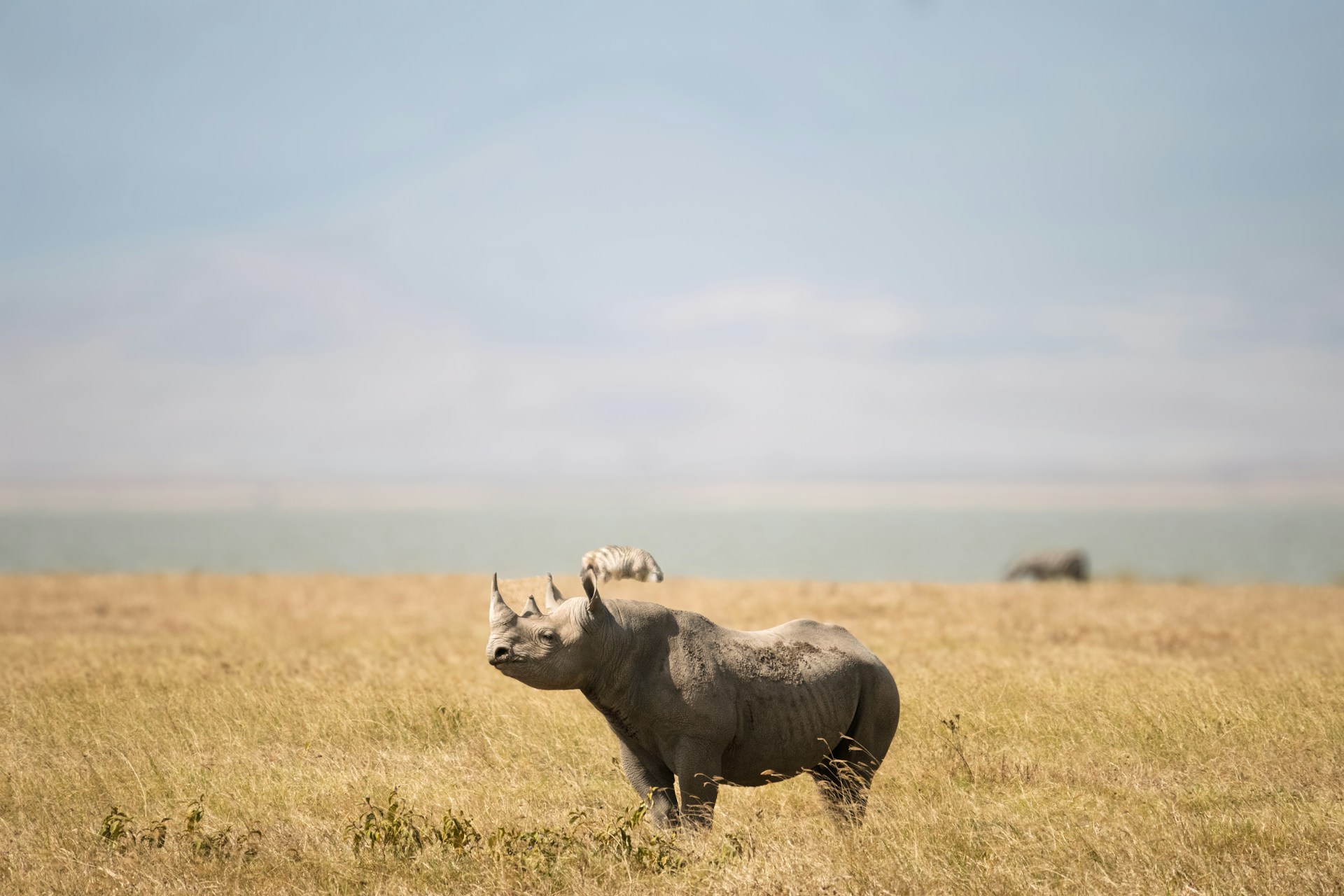
Grasslands comprise 40% of Earth’s terrestrial surfaces and are found on every continent except Antarctica. They may be called pampas, savannahs, rangelands, prairies, or steppes and are categorized as tropical or temperate. Regardless of their name, grassy vegetation is the dominant flora found there.
Rainfall usually varies from season to season; however, grasslands typically see between 20 to 35 inches of rain annually, which isn’t enough precipitation for promoting tree growth.
Grasslands are rich in biodiversity and support numerous grazing animals. For example, in African savannahs, you’ll find zebras, giraffes, and wildebeest. Prairie dogs, bison, and coyotes are common in North American grasslands.
Many people underestimate the importance of this particular type of ecosystem, including the following:
- They sequester 34% of global carbon stocks and are more stable carbon sinks than forests.
- They capture water flow and decrease the risk of floods.
- The permanent vegetation prevents erosion, loss of topsoil, and decreases water runoff.
- Bees tend to thrive in grasslands and promote pollination.
- Medical plants for pharmaceutical ingredients are abundant in grassland habitats.
3. Mountains and Polar Regions
In contrast to other terrestrial ecosystems, there isn’t a consensus on what actually characterizes mountain or alpine biomes—habitats set at higher elevations well above the treeline.
Due to fluctuating climatic conditions at more significant elevations, the animal and plant species found in mountainous environments change just as rapidly. At the peak of colder mountain ranges, it may seem like the only thing that exists is snow and ice. However, several species have adapted to the more frigid landscape.
Mountain habitats have a wealth of amphibians, fish, mammals, and birds, each of which has adapted to rocky terrains and harsh conditions. Meanwhile, polar bears, penguins, Arctic foxes, wolves, and whales are typically found in polar regions.
Bitter cold and blustery winds make life difficult for humans, animals, and plant species in polar regions. Nevertheless, these barren, icy tundras are home to rich biodiversity and microorganisms that have evolved over 10 million years to survive above and beneath the ice.
4. Deserts

Deserts are located between 15° and 35° latitude in North America, South America, Africa, the Middle East, and Asia. They receive about 10 inches of rainfall per year.
Desert temperatures can fluctuate from over 100°F during the daytime to about 25°F at night. Under these conditions, you may be surprised to learn that many flora and fauna thrive here.
Desert plants, like cacti, absorb water and store it for an extended period, allowing them to sustain long durations of heat and drought. Similarly, animal species like reptiles, kangaroo rats, camels, Fennec foxes, and meerkats have evolved to get enough water and conserve it by eating plants.
5. Aquatic Ecosystems
Different aquatic habitats are home to distinctive plant and animal species similar to forest ecosystems. Three types of aquatic habitats include:
- Freshwater: Lakes, rivers, streams, and ponds are examples of freshwater habitats. These ecosystems make up less than 0.01% of the Earth, yet support over 125,000 species.
- Marine: The open ocean is the water beyond coastal areas and is home to some of the biggest marine wildlife, such as whales, sharks, and dolphins.
- Coastal: Habitats along coastlines are where the land meets the sea and include mangrove ecosystems, coral reefs, salt marshes, estuaries, shorelines, and seagrass meadows. Coastal ecosystems are nursery grounds for numerous fish and breeding grounds for 85% of migratory birds in the United States.
Aquatic ecosystems are critical habitats, from mangroves shielding coastlines from rising sea levels to reefs and seagrass meadows boosting fish numbers for animal and human consumption.
These aquatic habitats are also carbon sinks. Studies have indicated that underwater grasses can capture and store 10% of the carbon in marine soils for long durations, reducing the impacts of climate change.
Habitat Loss and Degradation
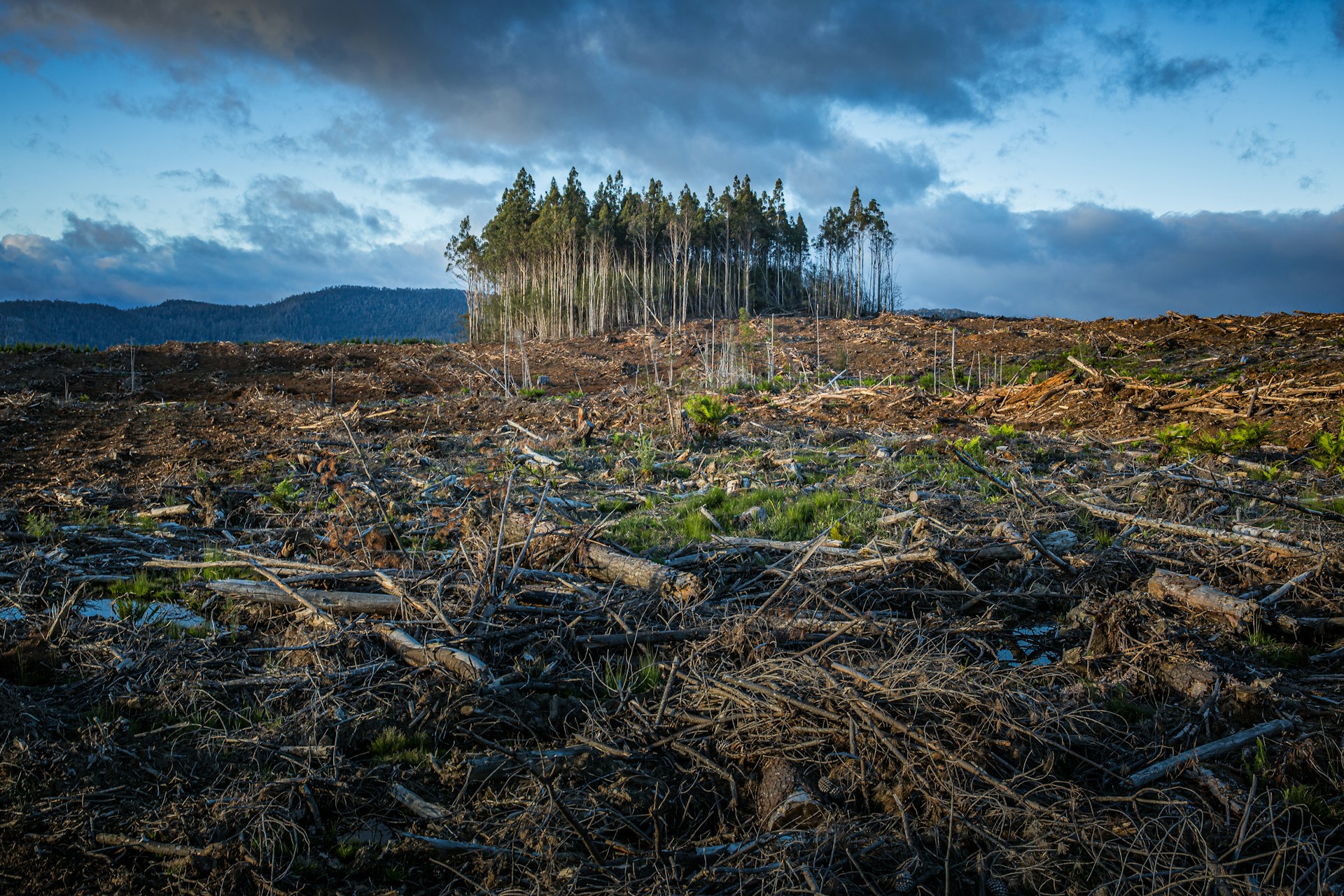
There is widespread concern about habitat degradation worldwide. Pollution, invasive species, illegal poaching and trading, and human activity have driven the rapid destruction of natural environments and species. According to the International Union for Conservation of Nature’s (IUCN) Red List, 88.3% of threatened and endangered species are most impacted by habitat loss.
Human-induced climate change has also impacted various types of habitats and their wildlife, such as polar bears. Polar bears spend half their lives hunting for food for survival. As sea ice melts under warming temperatures, they lose their ability to travel, rest and reproduce.
Ecosystem degradation could also have grave consequences for economies, food security, medicine and disease, erosion, climate change, and other weather events. For example, forest clearing and timber exploitation caused a 21.6% decline in global mangrove forests from 1985 to 2020, with a 16.5% decrease in carbon stocks. Mangrove ecosystems matter for fish harvesting, preventing coastal impacts from extreme weather, and even providing rare medicinal ingredients.
Frequently Asked Questions
What Is the Difference Between a Habitat and a Biome?
Some people use “habitat” and “biome” interchangeably, but they are two distinct concepts. A biome spans a large geographic area and is defined by the climate and the animal and plant species that have adapted to it. For instance, camel humps are made up of fat that converts to energy when they cannot access water resources in harsh desert biomes.
Habitats are the environments where organisms live within the biome. They provide shelter, food, water, and other essentials for survival. You can even find multiple habitats within a single biome, such as a sandy desert, rocky desert and mountainous ecosystem within an expansive desert region. Each habitat serves distinct functions for various species populations.
How Do Rainforests Play a Key Role in Global Climate Regulation?
Tropical forests are among the most critical habitats for climate regulation because they sequester large quantities of carbon dioxide (CO2). In fact, these ecosystems have a CO2 capacity of approximately 360 petagrams (Pg) in vegetation and 800 Pg in soil — nearly as much as what is stored in the atmosphere.
They also produce natural compounds that generate tiny particles for cloud droplets. The clouds reflect sunlight and help cool the Earth. With more clouds comes greater sunlight reflection and optimal plant growth.
How Can You Help Protect Local Forest or Coastal Animal Habitats?
There are many ways to protect local forests and coastal habitats, such as reducing your carbon footprint, properly disposing of waste, planting native plants, and using less plastic. Other ways to do your part include practicing the Leave No Trace principles when venturing outdoors, adhering to marked trails and avoiding disturbing wildlife.
Reaching out to local politicians in support of habitat protection legislation, donating and volunteering with conservation groups, and sharing your expertise with others also support a healthier environment.
All Habitats Are Worth Saving
Each habitat serves a specific ecological purpose, and the species that live within them are part of a complex network—a chain reaction that eventually impacts humans. If you think about it, some animals and insects prey on pests that destroy crops. A loss of crops and agriculture means greater food insecurity for populations worldwide. The same goes for fish die-offs during toxic algal blooms.
Conservation efforts are usually determined by how endangered a species or ecosystem is. However, even the driest, hottest, and coldest habitats are worth saving.
Editor’s Note: This article was updated on September 11, 2025, to fix broken links and update statistics. It was originally published on November 16, 2022.
Share on
Like what you read? Join other Environment.co readers!
Get the latest updates on our planet by subscribing to the Environment.co newsletter!
About the author

Jane Marsh
Starting from an early age, Jane Marsh loved all animals and became a budding environmentalist. Now, Jane works as the Editor-in-Chief of Environment.co where she covers topics related to climate policy, renewable energy, the food industry, and more.
